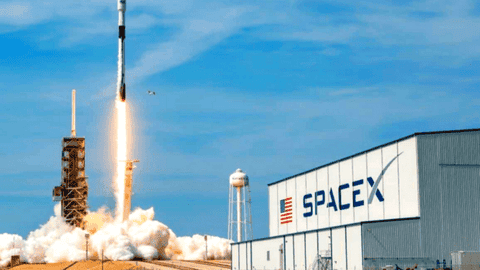According to Ookla although SpaceX Starlink Internet service has just completed the testing phase, its average download speed in 15 countries now exceeds 100Mbps. Starlink relies on a network of satellites called “constellations”. The constellations currently include more than 2,000 satellites. By comparison, the competing Viasat service has only eight satellites. That makes SpaceX by far the world’s largest operator of satellite internet services. Furthermore, the company plans to launch tens of thousands more satellites on its reusable rockets.
The distributed nature of Starlink satellites enables them to provide services at faster speeds and lower latency than traditional satellite internet. Ookla compared Starlink to HughesNet and Viasat, which had carved up the satellite internet market before Starchain. HughesNet and Viasat averaged about 20Mbps for download and 2-3Mbps for upload.
As of the fourth quarter of 2021, Starlink’s average download speed in the United States was 104.97Mbps and upload speed was 12Mbps. But even in the U.S., Starlink’s performance is inconsistent across regions and varies considerably from county to county. Among them, the Starlink network performed the best in Miami-Dade County, Florida, with a maximum download speed of 191.08Mbps. However, the download speed in Columbia County, Oregon is only 64.95Mbps.
SpaceX download speed is better in some regions
Starlink has achieved similar success in many other countries. It outperforms its competitors in Australia, Austria, Belgium, Brazil, Germany, Ireland, Italy, Mexico, New Zealand, Poland, and Portugal. It is worth noting that the Starlink network speed is faster in some countries than in the United States. For instance, SpaceX Starlink’s download speed in Australia is 141.55Mbps.
However, Starlink’s internet speed is still lower than the median speed of all fixed broadband in the United States, which has a download speed of 131.3Mbps. In terms of upload speed, Starlink’s performance is even worse, with fixed broadband upload speeds higher than 19.49Mbps.
One of the main problems with satellite internet is latency, which can be in the hundreds of milliseconds. This is too laggy for real-time applications like video chat. ViaSat’s current latency is 627 milliseconds, HughesNet’s is even higher at 725 milliseconds, and Starlink’s latency is only 40 milliseconds. This is not far behind the average fixed broadband latency of 14 milliseconds.
The speed of the Starlink network is constantly improving. As SpaceX continues to deploy satellites in batches, the service will only get faster and wider. However, SpaceX is grappling with high demand and a lack of supply. SpaceX recently launched Starlink Premium as an alternative for more demanding users who want higher connection speeds of 150Mbps to 500Mbps. However, this service costs as much as $500 a month.
